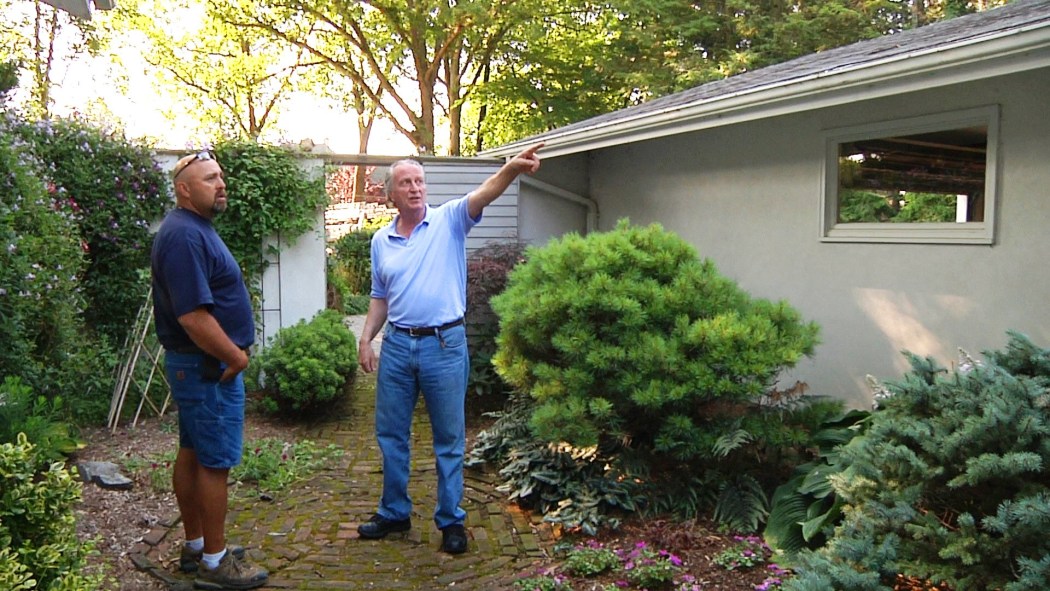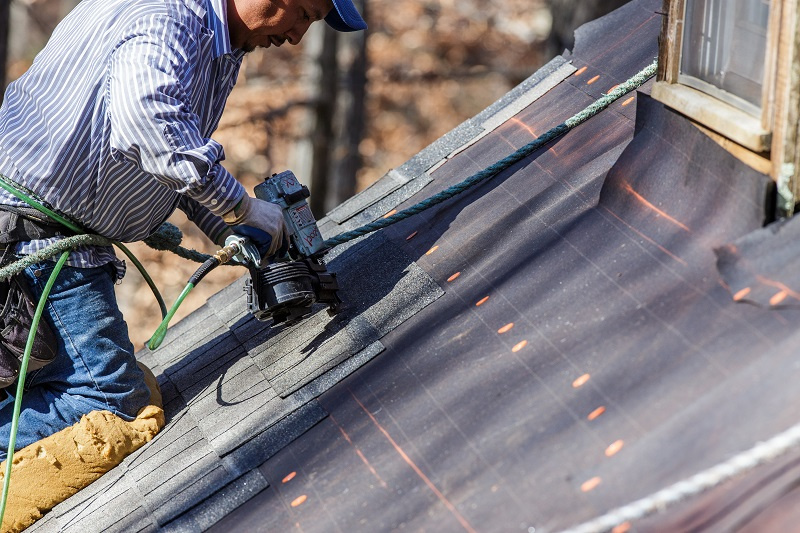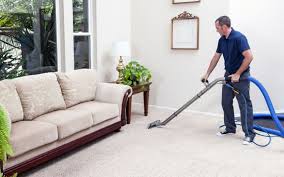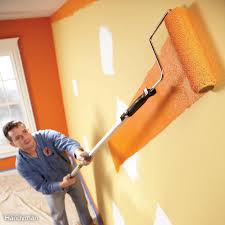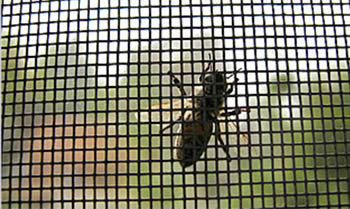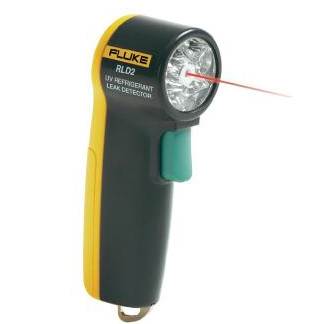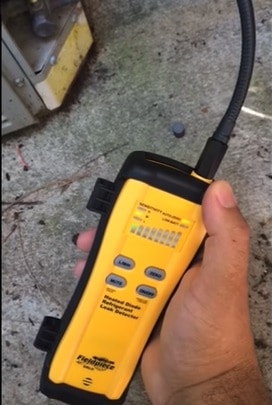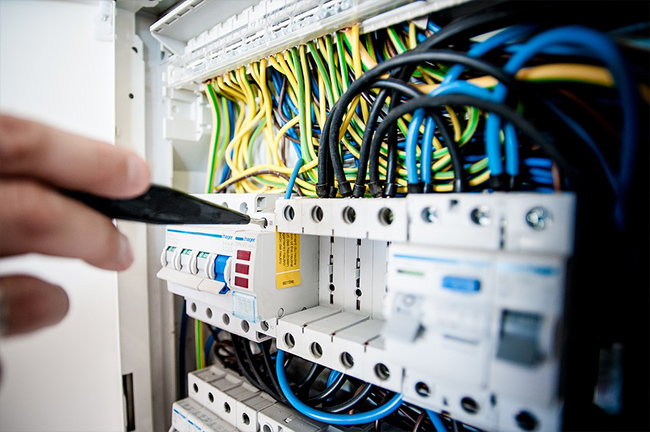The Ultimate Moving House Cleaning Checklist
If moving house tops the list of stressful experiences people go through in life and cleaning house tops the list of loathsome experiences people face on a daily basis, then cleaning for moving should be a truly nightmarish experience indeed. The mere idea of scrubbing floors and washing windows after the long weeks of laborious moving preparations and exhausting moving tasks may be enough to put you in panic – after all, you have only just finished organizing the myriad details of the relocation process, putting all the required paperwork in order and packing all your earthly possessions, so you are highly unlikely to have any energy left to spare. And yet, you need to clean not one but two properties at the very climax of your relocation endeavor – move-out/move-in day:
1) you will want to leave your old home in top-notch condition in order to be able to get your security deposit back or to make your property more desirable for potential buyers;
2) you will want your new home to be spotless when moving in.
So, no matter how tired and how impatient to close the relocation chapter of your life you may be, you need to take the time and the effort to clean your old property before moving out and your new one before moving in. Luckily, the task may not be as difficult as it seems at first – especially if you follow our simple, yet highly efficient cleaning tips for moving house.
Moving Out Cleaning Tips
To make cleaning easier and more effective, you are recommended to:
• Get hold of appropriate moving cleaning supplies and keep them at hand. There are certain cleaning supplies you can’t do without when preparing your home for moving – disinfecting cleaners, glass cleaners, baking soda, white vinegar, cleaning cloths, dusting cloths, plastic or nylon bristled soft scrubbers, different kinds of brushes, furniture polish, fabric protectors, a mop, a vacuum cleaner, a broom and a dustpan, a bucket, a step stool, rubber gloves, etc. Make sure these items don’t get accidentally loaded on the moving truck with the rest of your possessions – you’re going to need them when the movers depart from your old home and then again, before they arrive in your new property;
• Prepare and clean the items you are going to take with you as early as possible. You will certainly want to give your household items a good cleaning after the move, but this doesn’t make cleaning them before the move redundant – you probably don’t want to take all the accumulated dust and dirt, stains and grime, bacteria and germs to your new home, do you? Besides, wiping your items clean before the move will make your job much easier afterwards, when unpacking and arranging your new place. So, make sure you empty and clean all the furniture pieces and household appliances you intend to relocate several days before moving day and get them properly packed and ready for shipment by the time your movers arrive;
• Wait until your possessions have been loaded onto the moving truck to give your old home a final, thorough cleaning. If you start cleaning while your packed possessions are still scattered all around the place, your task will turn out to be much more difficult and time-consuming than necessary – all those moving boxes and furniture pieces will be in your way and you won’t be able to clean the premises quickly and efficiently enough;
• For best results, always start cleaning from top to bottom and back to front. Otherwise, you may soil an already cleaned surface and have to wipe it again;
• Complete “dry” cleaning tasks first (such as dusting, vacuuming and sweeping). You just can’t efficiently wash, mop, and/or wipe surfaces with a damp cloth when there is still dust or dirt on them;
• Clean task-by-task, not room-by-room. This method is much faster and considerably more efficient – when you have equipped yourself with a furniture polish and a soft cloth, for example, it makes sense to take care of all the furniture pieces in the property, not just the ones in your bedroom, right?

What Are the Housecleaning Expectations When a Seller Moves?
Do sellers have to clean the house?
Sellers have a responsibility to clean the home after they move. The question becomes: how clean is clean enough? It can depend on numerous factors, and exactly who is selling the house is usually key among them.
Filth and mold are often the least of your worries when you purchase a bank-owned home. Appliances might be ripped out and maybe the water heater has been stolen. Some banks don’t clean anything. They sell foreclosed properties in “as is” condition.
But homes in a seller’s possession are different. It doesn’t matter if it’s a short sale or a regular sale.
Do Sellers Have to Clean the House?
Real estate purchase contracts often stipulate that the house is to be “broom clean.” This is generally accepted to mean that the seller should at least sweep the floor and leave the walls and ceiling bare. The language in some of these contracts is admittedly ambiguous, however, and some states are vaguer than others.
For example, standard California real estate contracts don’t address the condition of the home at all except for stating that it should be left in essentially the same condition as it was when the offer was accepted. The property is sold in its physical condition as of the date of acceptance, and the seller is to remove all personal property and debris.
Read your purchase contract to determine the extent of any cleaning you’re contractually bound to do upon vacating. Hopefully, it will be concise and not leave the issue open to interpretation.
Customary Ways to Leave a Home
Most sellers take special steps on their own to present the home in acceptable condition if there’s no legal requirement to clean the property before moving out. Yet it’s understandable that sellers might be too tired to spend a lot of time cleaning after moving all day.
Most buyers will clean the home to their own standards before moving in regardless of the sellers’ efforts. There are nonetheless a few things a seller can do to leave the house reasonably clean and to create goodwill.
You’ll want to remove all personal property—including items that you’re just going to throw out—and vacuum and sweep the floors. Clean the kitchen appliances, the insides of the refrigerator and oven, and wipe down the counters. Scour the sinks and tubs. Wipe down interior cabinets and shelves. Wash all tile and vinyl or linoleum flooring.
What About the Garage?
The garage should be clean, too, because you’re selling it as part of your home. Of course, you’ll remove all your personal belongings here, too, and take care to throw trash away as well. Sweep the floor. Above all, properly dispose of any toxic chemicals.
Items pertaining to the property such as paint cans, roofing materials, or extra flooring should be stacked neatly, but check first to make sure the buyer wants your leftover materials. Some won’t.
Start As Early As Possible
This falls into the category of being kind to yourself. Give yourself ample time so you don’t feel frantic and pressured. Moving day is going to be crazy enough, so get as much of a head start on cleaning as possible. You might even want to give the place a good, thorough scrubbing before you list it for sale. It can only help the place show better.
It can be an overwhelming challenge if you have a large home. Consider tackling one room at a time, maybe one each weekend. You’ll get there eventually, and moving day will be a cinch if you can keep up with each room after it’s spotless.
How to Clean Kitchen an Apartment Before Moving Out
Moving out of an apartment can be a hard task: finding a new place, arranging transportation, and packing up all your belongings is hard work when all you want to do is get settled in your new home. Making sure your apartment is clean might be one of the most important tasks of all, because a thoroughly-cleaned apartment means you’ll get your security deposit back. Go through your apartment room by room and clean every small space and appliance to ensure a smooth move and a full deposit returned.
Cleaning the Kitchen
1. Clean the oven and stove. Buy one or two cans of oven sprayable cleaner and read the safety directions carefully, as many oven cleaners require protective equipment (gloves & goggles) and strong ventilation. Place newspaper in front of the oven, slightly underneath the door or drawer, to protect your floor from dripping cleaner. Evenly apply both cans to the inside of the oven, the grates, and the broiler sheets.
• If you want to avoid the chemicals in oven cleaners, use a dilution of 100g baking soda in 1 liter (0.3 US gal) of water and spray onto the surfaces. For a dirtier oven, increase the amount of baking soda so that the solution is more of a paste than a liquid. Leave for one hour, then use an ice scraper to remove the burnt carbon and spray any remaining in the oven. Repeat the process until the oven is completely clean.
• Make sure the oven is turned off before starting to clean.
2. Clean up the stove. Use an abrasive cleaner and tough sponge to scrub at any spots on the stovetop. For stubborn spots, spray some oven cleaner and let it sit. Clean the vent above the stove and be certain that the light bulb in the overhead hood is in working condition. Using a sponge and paper towels, wipe down all surfaces. Rinse with clean water.
• Soak drip pans and other removable parts in hot water with dish soap for at least 30 minutes, then scrub them. Repeat as necessary.
• Make sure the gas and stove are turned off before you start to clean.
3. Disinfect the dishwasher. Pull out the bottom rack and clear out the drain area. Empty the dishwasher, then fill a dishwasher-safe cup with vinegar, place it on the top rack and run a cycle with the hottest water setting. This will sanitize and wash away grime in the dishwasher, as well as remove any odors.
• When the cycle finishes, remove the cup and sprinkle baking soda around the bottom of the dishwasher. Run through another short cycle on the hottest water setting. This will remove any remaining stains and odors.
4. Use a rag and cleaning spray to clean drawers and counter surfaces. Unplug and remove all appliances and items left in the drawers. Make sure to get into the corners of drawers and countertops.
5. Wash out the sink. Use a gentle soap, soft cloth and warm water on the faucets, drain and outer rim. Run hot water down the drain. Use a toothbrush to scrub around the edges of the sink.
• For a deeper clean on the surface and drain of a stainless steel sink, mix baking soda and lemon juice together and scrub it onto the surface, then pour the rest down the drain.
• For a porcelain sink, spray the sink with hydrogen peroxide and let it sit for at least 15 minutes, or up to a few hours. The longer you let it sit, the more stains it will remove. Rinse away with warm water, scrubbing if needed to remove further stains.
• Avoid cleaning the sink until you’re sure you won’t have to use it again.
6. Remove all the food from your refrigerator. Give away food that will go bad, like milk or meat, to a neighbor, and store or throw away the rest. This will allow you to defrost and clean the refrigerator without anything in the way.
7. Unplug the refrigerator and let it defrost. Pad the inside with newspapers or towels and lay some on the floor around the bottom of the refrigerator to catch any water runoff. Let refrigerator and freezer defrost for several hours and dry the interior completely before you start cleaning it to prevent mold from growing.
8. Clean the freezer. Use a rag or sponge with soapy water to clean the interior and the rubber door seal. Wipe it down one last time with a clean rag or paper towel.
9. Clean the refrigerator. Scrub down the exterior, starting on the top and working down. Pull out the refrigerator shelves and wash them with soap and water, leaving them out to air-dry afterwards. As the shelves are drying, clean out the interior of the refrigerator with a clean rag.
6 Gross Things That Happen When You Don’t Clean Your Apartment
Unless you’re a total neat freak, you probably put off cleaning around the house until absolutely necessary. Laziness strikes — and so does the dust — and before long you’re living in total filth. When that happens, it’s normal to take pause, look around, and wonder what gross things will happen when you don’t clean your apartment.
You might also wonder how much longer you can put things off. And the answer is — not long. That’s because cleaning isn’t only about keeping up appearances and not having to panic when a surprise guest stops by. It’s about staying on top of household chores — like taking out the trash and emptying the fridge — for the very sake of your health.
Like it or not, gross things do happen. And when they do, your apartment can become a little biohazard of dirt, germs, and allergens. You can only sit around for so long with trash piling up and dust accumulating before things get out of hand.
So if you haven’t cleaned in a minute, or you’re wondering how much longer you can go before scrubbing the toilet, then here are some gross things that just might inspire you to get out the mop.
1. Dust Mites Will Move In & Make Your Allergies Worse
Giphy
If you don’t dust or vacuum, your apartment will turn into an allergen festival. Pollen will gather in the nooks and crannies, pet dander will lie in wait, and dust mites will come out in force. Basically all things that make your eyes water and your nose run will be chilling out on surfaces, and making your allergies worse.
None of it is good, but in my opinion, the worst offender on the list is dust mites. According to an article on ApartmentTherapy.com, “Dust mites (actually, their excrement) are responsible for the majority of year-round allergy problems in the bedroom. They live in soft surfaces, and dust, and come out to eat the skin cells and oils we all shed throughout the day.” Gross.
When To Clean
If you suffer from allergies, then you’ll need to dust at least every week. You’ll also want to kill dust mites by washing all your bedding in hot water and cleaning the floors with a HEPA-filter vacuum, especially in the spring.
2. Your Bathroom Will Become A Biohazard
Giphy
Bathrooms can seem sort of self-cleaning. I mean, the shower is full of soapy water, the toilet flushes, and the sink washes away all those toothpaste stains. So really, the whole room basically takes care of itself, right?
That’d be nice, but sadly it’s not the case. In fact, it’s quite the opposite. The wet environment makes your bathroom the perfect place for mildew, as well as gross (and dangerous) molds. According to Chanie Kirschner on MNN.com, “Mold is a form of fungus that is found all around us in the natural environment. However, when there is moisture indoors that isn’t dried immediately — such as when there is leakage or flooding — mold can grow inside, too.” Yikes.
When To Clean
After every shower, turn on your bathroom vent to help dry out the room. And prevent molds from cropping up by washing surfaces and tiles with disinfectant sprays at least once a week. If you already have something growing around your sink and it looks like black mold, then you’ll want to go ahead and call a professional. This stuff is toxic, so you shouldn’t clean it up by yourself.
Try: Lysol Multi-Purpose Cleaner with Hydrogen Peroxide, $3.79, Amazon
3. Those Sheets Of Yours Will Rot
Giphy
OK, maybe they won’t rot. But sheets are pretty good at collecting oils, dirts, and other questionable stains. As Kristen Sturt noted HuffingtonPost.com, this is especially the case if you’ve been sick, if you go to bed without showering first, or if you sleep naked. These habits dirty up your sheets way faster, and make frequent washing even more necessary.
Try: Gain Liquid Detergent with Original Scent, $5.99, Amazon
When To Clean
Wash your sheets once every week to two weeks, and more often if you’re sweaty, naked, or sick.
4. The Trash Will Attract Bugs
Giphy
Taking out the trash often feels way harder than other chores because it involves going outside where it’s often cold, and where it’s necessary to wear pants. But don’t let this deter you. An overflowing trash can, and/or one that is dripping with leaks, is bound to attract ants, cockroaches, or worse.
When To Clean
Take out your trash bags as soon as it gets full (or even before if it’s smelly), and clean up any spills or drips that have gathered in the bottom of the bin.
5. Your Fridge Will Grow Creatures
Giphy
I know, we all have the best intentions when it comes to eating leftovers. But more often then not, they get pushed to the back of the fridge to rot. When that happens, mold and bacteria can start to grow, and you really don’t want these things hanging out by your food.
It’s not only about spoiled leftovers, however. You can make your fridge even more germy by simply using it. According to an article on About.com “Removing smelly items reduces odors and cleaning the spills improves the look, but what isn’t readily visible is the bacteria that accumulates in this food storage area between thorough cleanings.” Sigh.
When To Clean
Wipe up spills as soon as they happen, throw out expired food ASAP, and give the whole fridge a thorough weekly cleaning with a disinfecting spray.
Try: Seventh Generation Multi-Surface Disinfecting Cleaner, $10, Amazon
6. Animals Will Live In Your Clutter
Giphy
We all know spilled food and crumbs attract bugs and mice. But did you know animals like to live in clutter, too? Yes, even “well-organized” clutter. Because really, they just want to hide and will look for houses with lots of places to do so.
The worst part though, is that mice can bring disease. In fact, one mouse can carry up to 25 different diseases, such as the deadly Hantavirus. Suddenly all those piles of books and magazines don’t seem worth the risk.
When To Clean
This one may be quite the undertaking, because you really should de-clutter your entire place. That includes your basement, if you have one, as well as your closets. Do a big yearly spring clean, and get rid of junk once and for all.
It may not be fun, but cleaning your apartment is imperative to your health. Doing so will prevent little gross things from moving in and making you sick, so do it often.our place is brand new or freshly vacated, so it should be clean, right? Not necessarily. If the house has just been built a whole home clean is necessary to remove any remaining dust or chemical residue that comes with construction.

Tips to wipe out germs in your home
Germs and bacteria are everywhere, including the place you strive to keep the cleanest: your home. To shield against germs, consumers are spending more than $1 billion annually on antimicrobial products, according to the Environmental Protection Agency.
“Because of viruses like H1N1 and other household germs, consumers are taking every precaution necessary to keep themselves and their families healthy, and that starts at home,” said Jackie Cooper, spokeswoman for Eureka, the vacuum manufacturer. “With consumers looking for products that will help keep the germs and bacteria at bay, there are now many options available to create a healthy living space.”
Cooper suggests the following tips to achieve a clean and germ-free home:
Don’t let them in. Many germs and bacteria make their way into your home by tagging along with you. Once in the house, these microorganisms have a nice, safe place to grow and multiply. Cut germs off at the door by keeping antimicrobial wipes or hand sanitizers near the entrances to your home. This way you, and your guests, can fight bacteria on the spot.
Vacuum often. Tackle the germs that have been tracked into your home by using a vacuum with a bacteria-fighting solution to not only suck up dust and dirt but also prevent bacteria from growing in or on the vacuum as well. Be sure to change your vacuum filter and bag regularly to reduce the number of allergens and other particles released back into the air. If these items are not changed regularly, the vacuum’s performance can be compromised and dirty air can be expelled back into your home.
Beware of the kitchen and bathroom. Don’t forget that germs also like to hang out in places like the kitchen sink where pathogens such as salmonella and E. coli can be found. Although well-intentioned, the kitchen sponge you use to clean is only helping to spread those germs throughout your kitchen. To kill germs on the sponge, the U.S. Department of Agriculture recommends microwaving it on full power for one minute. To protect your hands from germs, keep bacteria-fighting soap near the sink to use when working in the kitchen.
Another popular germ hangout is the bathroom, where they can be found in toilets, showers and sinks. One simple step to cut back on germs in the bathroom is to make good use of the toilet lid. When a toilet is flushed, spray can land up to several feet away from the actual toilet, allowing viruses and bacteria to land on items such as a toothbrush or hand towel. Take a few extra seconds before flushing to close the lid and trap harmful bacteria inside




